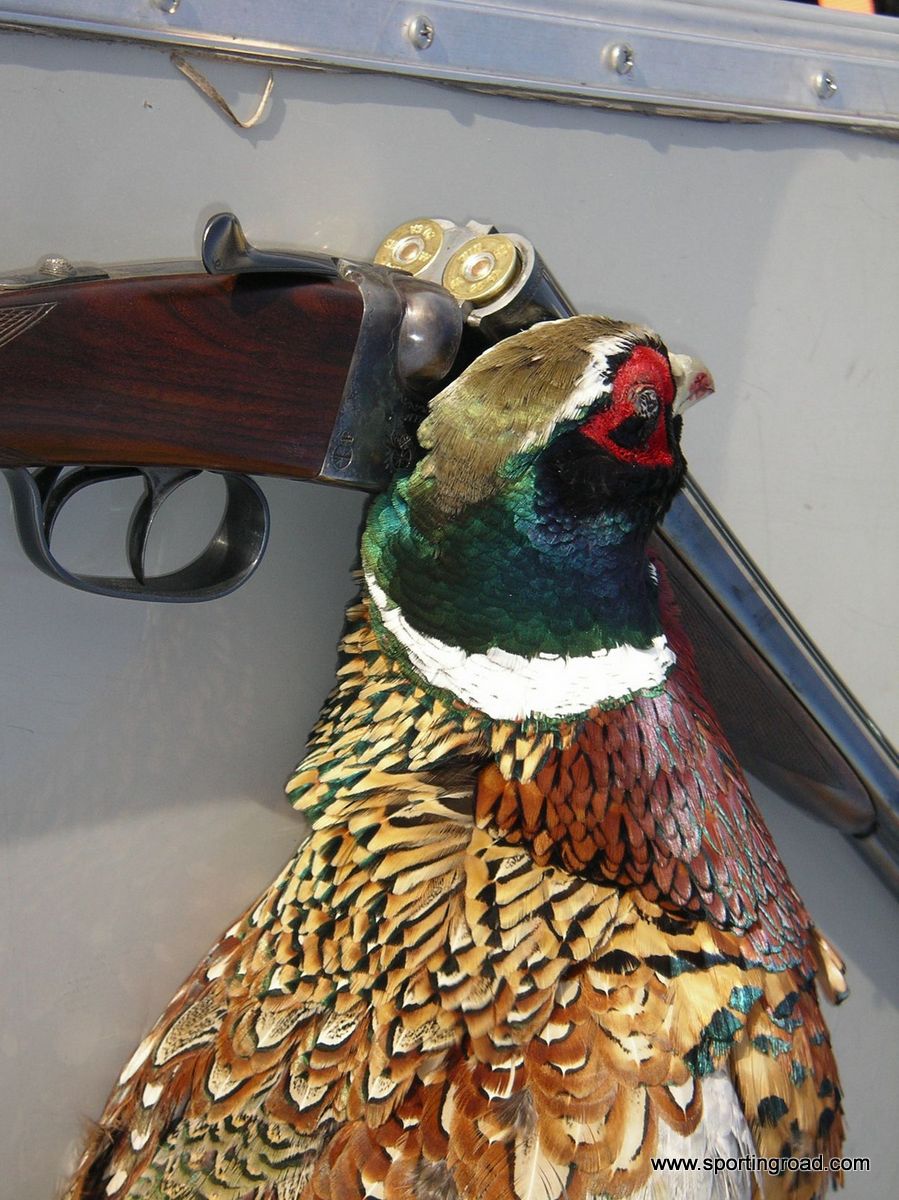This is my favorite dish for pheasant. It is the only dish I have found that works equally well with the tough legs or tender breasts. In fact, I collect all of the legs from my friends who choose to breast the pheasants (they skin them and throw them in a freezer bag throughout the season for the crazy Frenchman) and you can use 12-24 legs for the recipe instead of a whole bird. The legs come out that good, you don’t need the more tender breasts, and, in fact, it is the only recipe I have made which works well for the tougher pheasant legs.
The basic recipe comes from Jasper White who did an episode with Jacques Pepin on public television. It was one of my first recipes to discover and, after more than 20 years, it is still my favorite for pheasant. Jasper White wrote a book entitled 50 Chowders, which I bought that day by calling the 800 number on PBS, and still have it in my collection. I have to confess, I haven’t made any of his other chowders from the book, other than this one and New England clam (Quahog) Chowder which was very delightful, but tough to source here in the Rocky Mountains.
This chowder is even better the next day, after the flavors have mingled, so you can make it ahead of time and just rewarm it for that special meal. Or throw it in a soup thermos, Tupperware, or whatever (by the way, we think Rubbermaid containers are now the best in clear plastic with red lids, available at Costco for this sort of thing, as they never stain as other plastic-ware does and they last forever) and take it on a picnic the following day. With the year-round supply of fresh cabbage, potatoes, and carrots, it works equally well in the heat of summer with the substitution of chicken or a satisfying winter dish featuring freshly hung pheasant.
White writes, “chowder is ‘a dish’ unique unto itself… and like the fishing communities where it originated, chowder is unpretentious…. and celebrates the local ingredients in their seasons.” It is a cooking style of a cast iron caldron cooked over an open fire with regional ingredients, which started with seafood and moved inland, to include potatoes and even wild game, instead of seafood. Some are creamy but others are clear, like chicken noodle soups. Chowder is a style, not a recipe. Chowder cannot be defined by its ingredients.
In the early American kitchen, salt pork was a staple, being kept in pork barrels made from the entire pig, except the head and innards, and cured in a liquid brine. The salt pork was added to dishes to enhance flavors and to five substance to seafood chowders. Chowders were traditionally cooked over open hearths, ships stoves or driftwood embers and beach parties which imparted a certain smokiness.
Never forget, that “If one’s stock is good, what remains of the work is easy.” Auguste Escoffier, Le Guide Cullinaire,1903.
- 1 pheasant (perfect for leg pieces)
- 4 qt water
- 4 fresh thyme sprigs
- 2 lrg onions – 1 unpeeled, coarsely chopped, 1 peeled and 3/4″ dice
- 2 carrots – 1 coarsely chopped and 1 sliced 1/3″ thick rounds (split thick ends lengthwise and cut into half-moons)
- 1 lrg celery stalk coarsely chopped
- 1 garlic clove crushed
- 2 dried bay leaves
- 1 tsp black peppercorns – (heaping)
- 2 cloves
- 4 oz slab bacon or salt pork-remove rind (reserve it for the stock) and cut into 1/3″ dice
- Kosher or sea salt to taste
- 4 tbl unsalted butter
- 1/4 tsp caraway seeds finely chopped
- 1 lb Yukon gold, Maine, PEI, or other all-purpose potatoes halved, sliced 1/3″ thick
- 8 oz Savoy cabbage cut 3/4″ pieces
- Freshly ground black pepper to taste
- 1/4 cup chopped fresh Italian parsley
Using kitchen shears, quarter the pheasant and put in a 6- to 8-quart stockpot and cover with the water. Bring to a boil, skimming off the white foam as it rises to the surface. (Using a ladle and a circular motion, push the foam from the center to the side of the pot, where it is easy to remove–if you attempt to skip this important step, the broth with be cloudy and dull, so it is important to remove all the froth). Lower the heat so the broth is at a slow simmer.
Meanwhile, remove the leaves from 3 springs of thyme, reserving the stems, chop, and reserve (you should have 1 teaspoon). Add the thyme stems and the remaining thyme sprig to the broth. Also add the coarsely chopped onion and carrot, the celery, garlic, bay leaves, peppercorns, and cloves, along with the reserved bacon rind, to the pot. Season lightly with salt, partially cover, and simmer slowly for 2 hours.
Remove the broth from the heat. With tongs, transfer the pheasant pieces to a plate. When they are cool enough to handle, pull the meat off the bones, discarding the bones, and tear the meat into bite-sized pieces. Or cut the meat with a knife into rectangular strips that are approximately 1/2- by 1-inch.
Strain the broth through a fine-mesh strainer; you should have about 8 cups. If you are not making the chowder right away, let the broth cool a bit, then refrigerate; cover the broth after it has chilled completely. (The broth and meat can be prepared a day in advance if you like)
Heat a 4- to 6-quart heavy pot over low heat and add the bacon. Once it has rendered a few tablespoons of fat, increase the heat to medium and cook until the bacon is crisp and golden brown. Pour off all but 1 tablespoon of the fat, leaving the bacon in the pot. Add the butter, the diced onion, the sliced carrot, the reserved thyme leaves, and the caraway seeds and saute, stirring occasionally with a wooden spoon, until the onion is softened but not browned. Add the potatoes and the reserved pheasant broth, bring to a simmer, and simmer over medium heat for about 8 minutes, until the potatoes are cooked through but still firm. Add the cabbage and simmer for 5 minutes more, until it just begins to soften (it will continue to cook after the chowder is removed from the stove).
Remove the chowder from the heat, stir in the pheasant meat, and season to taste with salt and black pepper. If you are not serving the chowder within the hour, let it cool a bit, then refrigerate; cover the chowder after it has chilled completely. Otherwise, let it sit at room temperature for up to 1 hour, allowing the flavors to meld. Use a slotted spoon to mound the pheasant, cabbage, onions, and potatoes in the center of large soup plates or shallow bowls, and ladle the clear broth around. Sprinkle each serving with a generous spoonful of chopped parsley.

